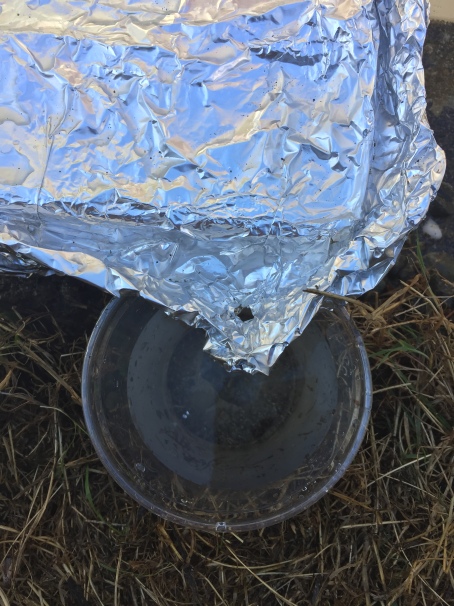It is intended that students will come up with their own designs for the stormwater runoff solution they want to model. The pictures and suggestions below are intended for the teacher to review ahead of time so you will have ideas you can nudge students towards if they get stuck. Think about questions you could ask to help guide students as they are designing their solutions.
Green Roof
Grass was used to represent plants on the “roof.” Popsicle sticks are a “walk way” for visitors. You can’t see in this picture that a waterproof and gravel layer were added under the grass to represent the layers in a real green roof.

Pavers
Popsicle sticks laid side by side to represent pavers that let water soak in between them.

Rain Barrel
Create a “roof gutter” out of shaped tinfoil to catch water and drain to a hole that leads into the “rain barrel” (a plastic cup). Getting the gutter to drain properly can be challenging for students.

Bioswale
Constructed with layers to represent some of the different components in a bioswale:



Alternative Bioswale Design
Modeled with sponge pieces/

Other Examples (pictures to come)
- Improve Soils = If the soils being improved were impervious they should be represented with tinfoil (possibly with sand on top of it) before the solution is implemented. The tinfoil could be removed, some humus mixed in, and a layer of wood chips added to the top. Be aware that if a lot of humus is added it will be messy and hard to dry out.
- Pervious Concrete = use toothpicks to poke holes in tinfoil.
- Planting Trees = Poke a toothpick through the center of a long sponge piece (easier to do when wet). Dig a deep hole and “plant” the bottom of the sponge in the soil with the rest sticking straight up.
- Rain Garden = dig a hole and put humus in the bottom of it. Place plants with roots on top and around sides. Alternatively, dig a hole and put sponge pieces in it.
